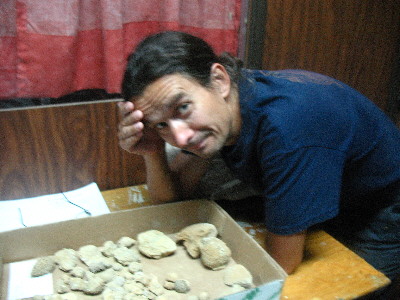|
I can try to ID your sample. This service is completely free, also for consulting companies. Since I receive regularly requests, I kindly ask you to lookup the following checklist.
Images
- Sending some digital photos (greyscale is sufficient) is a good idea together with some data on the locality / stratigraphy / facies.
- Do not send more than three files that are not larger than one MB each by email.
- In order to send larger and/or more files please use a service like wesendit.com, but not dropbox or google what's ever.
- Images must have a scale (or an indication of the resolution) and a number for reference. Do send an e-mail before. I do not download images with an uncertain source.
- It does not make much sense to send uncut, unpolished specimens; it is almost impossible to determine them. Try to prepare a polished surface or to obtain a thin section.
Samples
- Please do not send any material without contacting me beforehand. I will provide a valid address. Never ever send any sample to Mexico. I have to pay a high importation tax.
- Please do not send "bulk" samples, e.g. uncleaned, unprepared samples, or just rock samples (where I have to search for the corals). They will be dumped.
- When sending material to abroad please do not declare them as "corals" or "fossil corals"; please declare them always as "rock samples".
- If you send your samples, please provide the following information (see also RTF file below for download),
- your postal ("return") address,
- collection name (private collections are OK),
- a unique specimen number for reference for each specimen or a serial number, where I may append current numbers,
- locality of the samples as exact as possible.
- lithostratigraphy and / or age of the rocks where the material was taken from,
- a clear statement whether I am allowed (1) to make a small polished section (2) to cut the specimen, and (3) to make thin section(s). Thin sections are sometimes necessary for correct determination and will be returned with the samples to you (or what remain).
- Give me at least six months. Determination may be easy, but sometimes I cannot send your samples immediately back to you (I prefer to send them from Europe).
- When I would like to use your samples for a publication, I will contact you beforehand and ask for permit. I will not publish anything without your OK. But publishing new projects has become less important to me.
- No larger faunas anymore.
Download RTF file with sample label.
|
